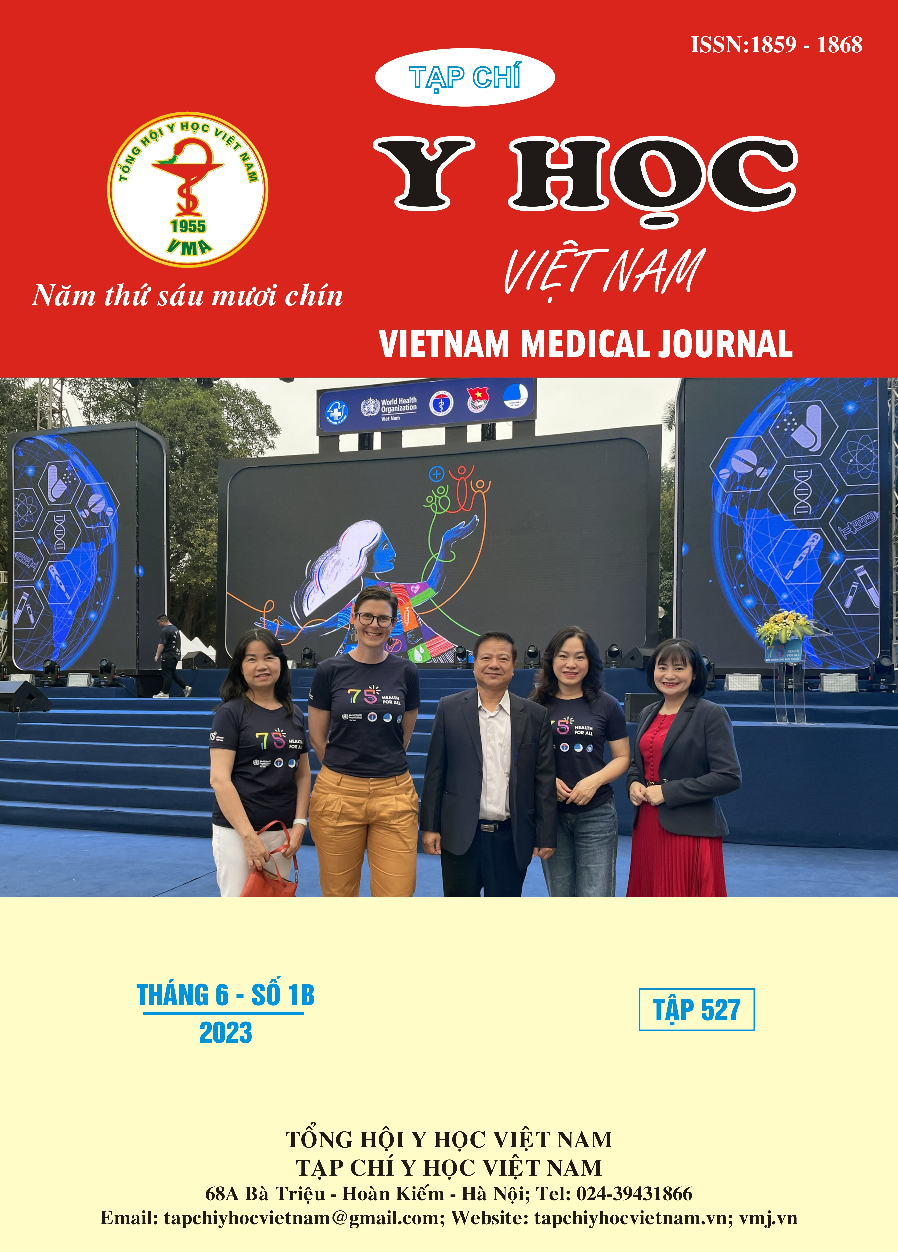ASSESSMENT OF RESULTS BONE, SOFT TISSUE THE STABILITY OF IMPLANT POSTERIORMANDIBULAR ON PATIENTS USING STEREOLITHOGRAPHY SURGICAL GUIDE IN CAN THO UNIVERSITY OF MEDICINE AND PHARMACY HOSPITAL
Main Article Content
Abstract
Background: The implant is supported by a 3D printed surgical guide that helps to position the implant correctly to ensure the long-term success as well as the aesthetic result of the final dental restoration. Objective: to evaluate the results of soft tissue bone after implantation in the posterior teeth on patients using 3D printed surgical guide trough system immediately after implantation and 3 months after implantation. Materials and methods: All implants were surgically performed at the Department of Odonto-Stomatology - Can Tho University of Medicine and Pharmacy Hospital from March 2021 to June 2022. Research facilities - Galileos CBCT scanner of Sirona, Germany, the disc stores the patient's CBCT images as DICOM data. Trios 3 scanning system to convert jaw sample data into digital data with STL (standard template library) data format.- Blue Sky Plan software is used to design guide trough for dental implant surgery. Results: Regarding the bone density at the implant site, we recorded the majority of bone density at D3 with 18 positions, accounting for 56.3%; followed by D2 with 13 positions accounting for 40.6% and D4 with 01 position accounting for 3.1%. The average thickness of gum tissue in the implant area was 2.22 ± 0.68 mm with a median of 2.5 (1.5 - 3.0); There were no differences in terms of gender or location. After 3 months of surgery, the keratinized mucosa on the outer surface of the implanted tooth had an average value of 2.23 ± 0.70 mm with a median of 2.5 (1.5 - 3.0). The degree of bone loss in the group with thick and wide horny gums was statistically significant less than the other group (p<0.05). Conclusion: The proximal alveolar crest had an average focal length of 0.18 mm and the distal alveolar crest had an average of 0.21 mm after 3 months. The group with the thickness and width of the keratinized mucosa < 2 mm had a higher degree of bone loss around the implant than the other group. The 3D printed surgical guidance system has been significant in preserving and guiding soft tissue, shortening the treatment time.
Article Details
Keywords
Stereolithography surgical guide, first molar mandibular, soft tissue, prosthetics
References
2. Đàm Văn Việt (2013) Nghiên cứu điều trị mất răng hàm trên từng phần bằng kỹ thuật implant có ghép xương, Luận án tiến sĩ y học, Trường Đại học Y Hà Nội.
3. Kim JH, Kim YK, Yi, Ỵ J et al. (2009), “Results of immediate loading for implant restoration in partially edentulous patients: a 6-month preliminary prospective study using SinusQuick™ EB implant system, ’’The Journal of Advanced Prosthodontics, 1 (3):136-139.
4. Jeong.SM, Choi. BH, Kim. J, et al. (2011), ’’A 1-year prospective clinical study of soft tissue conditions and marginal bone changes around dental implants after flapless implant surgery’’, Oral Surgery, Oral Medicine, Oral Pathology, Oral Radiology, and Endodontology, 111 (1):41-46.
5. Kotsovilis S, Fourmousi Is, Karoussis I K, et al. (2009), ‘’A systematic review and meta-analysis on the effect of implant length on the survival of rough-surface dental implants’’, Journal of Periodontology, 80 (11):1700-1718.
6. Linkevicius T, AlgirdasP, Linkeviciene L, et al. (2013), “Crestal Bone Stability around Implants with Horizontally Matching Connection after Soft Tissue Thickening: A Prospective Clinical Trial: Thickened Soft Tissues Improve Bone Stability’’, Clinical implant dentistry and related research, 17 (3):497-508.
7. Misch C. E., Goodacre C. J.,. Finley J. M, et al. (2005),’’ Consensus conference panel report: crown-height space guidelines for implant dentistry-part 1’’, Implant dentistry, 14 (4):312-321.
8. Pyo S. W.,. Lim Y. J,. Koo K. T, et al. (2019),’’ Methods Used to Assess the 3D Accuracy of Dental Implant Positions in Computer-Guided Implant Placement: A Review’’, Journal of clinical medicine, 8 (1):54.
9. Shenoy VK (2012)’’ Single tooth implants: Pretreatment considerations and pretreatment evaluation’’, Journal of Interdisciplinary Dentistry, 2 (3):149-157.
10. Spielau T., Hauschild U.,. Katsoulis J (2019), ’’Computer-assisted, template-guided immediate implant placement and loading in the mandible: a case report’’, BMC Oral Health, 19 (1):1-9.


